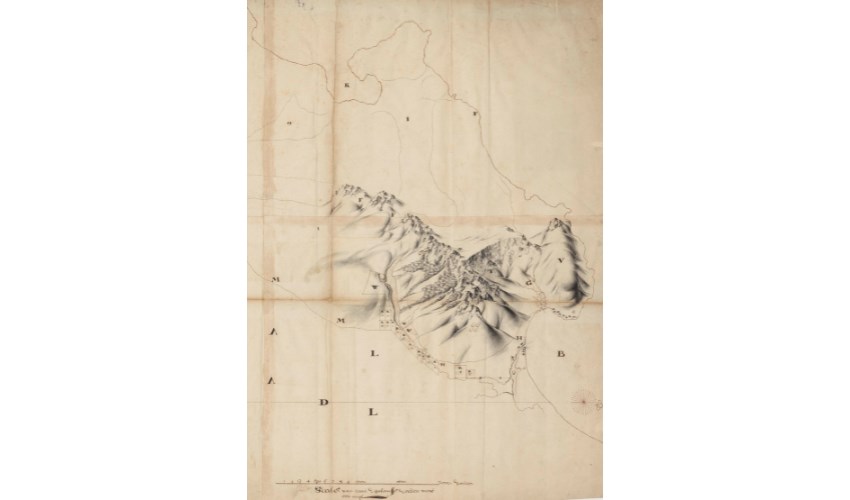At this year’s Wine Harvest Commemorative Event, which annually celebrates the 2 February 1659 birthday of the South African wine industry by honouring individuals who have shown the way for future generations, Ken Forrester was named Visionary Leader.
Then came sad news that a former recipient of the award had passed away, namely Dave Hughes, and so I decided that I should write about a wine legend from the past in this article to celebrate SA wine’s 364th birthday.
I also knew exactly who it would be: Jacobus Cornelisz van Rosendael.
Rosendael may have died almost 350 years ago but he played an important role in the establishment of the wine industry, most certainly paving the way for future generations. And not only were events in his life relatively well documented, but they also suggest he was – like Hughes and other sorely missed wine legends, including Duimpie Bayly and Allan Mullins – a ‘mensch’.
Rosendael came to the Cape as a soldier but was released from Dutch East India Company duties on 14 April 1657 to become one of the first vrijburghers (freemen). Before long, he and Otto Jansz were farming on land that is now home to Rhodes Memorial – a partnership so amicable that when Rosendael shot Jansz in the thigh, Jansz forgave him ‘from the bottom of his heart’ because he knew he had fired innocently, intending to shoot a Khoe intruder.
To put the above incident in context, it took place in June 1659, at the height of the First Khoe-Dutch War, which resulted when the new settler farms along the Liesbeeck River cut off traditional Khoe grazing and watering spots. When peace was negotiated in January 1660, Commander Jan van Riebeeck conceded that certain vrijburghers had further provoked the Khoekhoen, such as when Jan Reyniersz and Hendrik Boom had strung up the Goringhaiqua chieftain Gogosoa from the rafters. ‘But as Jacob Rosendael had cut him down he was saved alive.’
Rosendael was also quick to draw his knife in 1665 when he fought Thielman Hendricksz, his rival as an alcohol pachter. The right to sell liquor was granted to only four men annually and officially acknowledged as the only way ordinary men could hope to achieve prosperity at the Cape. Needless to say, competition was fierce between the pachters – and their wives. When Hendricksz’s wife, Mayken, slandered the newly arrived and hastily married Mrs Rosendael, Catharina, as having previously been a prostitute in Amsterdam, Rosendael saw red.
Duly called before the authorities, Hendricksz told them all to ‘go to the devil’ which resulted in ‘this coarse and impudent boor’ being arrested. Rosendael, on the other hand, went forth and prospered, using his pacht profits to purchase Bosheuwel, the magnificent property originally planted with vines by Jan van Riebeeck (today the suburb of Bishopscourt).
In terms of the sale, which took place on 28 November 1665, Rosendael was to pay 1 600 guilders in three instalments, with the Cape authorities retaining the right to press the entire 1666 harvest and also to take 6,000 cuttings for planting at Rustenburg, the Company’s Orchard in Rondebosch. In February 1666, 1½ leaguers (roughly 864 litres) of ‘lieffelyke’ (lovely) wine was made, and in October 1666 the authorities received positive feedback from their Dutch East India Company directors, the Lords XVII: ‘The wine sent us as a specimen we found, contrary to expectation, very well tasted.’
By 1670, Rosendael’s wine was so highly regarded that he was granted the unprecedented privilege of selling as much of it as he liked, not only to the vrijburghers but also to ship passengers. Furthermore, he was exempted from paying the excise duty imposed on all other farmers shipping surplus wine to Batavia (capital of the Dutch East Indies, Jakarta today).
Praised for ‘showing great diligence in extending his vineyard’ at Bosheuwel, Rosendael decided to sell his house and a separate garden in Table Valley. Dated 4 September 1671, this sale was highly significant because the buyer was Anthonij Jansz van Bengale, the first vrijswart (free black/former slave) ever to purchase property at the Cape.
Clearly more open-minded as well as more gifted at winegrowing than most of his contemporaries, Rosendael was unfortunately ‘snatched away from this sinful, perishable and vain world by the cold, unexpected, relentless death’ on 23 April 1676.
But that's not quite where his story ends…
His daughter Johanna ended up marrying Frederick Russouw, who in 1695 became the owner of Steenberg in Tokai. Now one of the Cape’s prestige estates (owned by Graham Beck Enterprises), Steenberg would pass to Rosendael’s grandson in 1717, his great-grandson in 1765, his great-great-grandson in 1801 and his great-great-great-granddaughter Leonora Russouw’s husband, Johannes Adriaan Louw, in 1843. The estate would then stay in the Louw family until 1990!
How many Louws, Russouws and others working in the wine industry today, I wonder, are descended from the Cape’s very first highly acclaimed winemaker? Probably quite a few.

1658 map of the first virijburgher farms along the Liesbeeck River, with W indicating the location of Bosheuwel, first farmed by Jan Riebeeck and later by Jacobus Cornelisz van Rosendael.
Bibliography
Leibbrandt, HCV: Précis of the Archives of the Cape of Good Hope, WA Richards & Sons, Cape Town, 1896-1905
Moodie, D: The Record; or Official Papers relative to the Condition and Treatment of the Native Tribes of South Africa, Part 1. 1649-1720, AS Robertson, Cape Town 1838-39
Theal, GM (ed): Abstract of the Debates and Resolutions of the Council of Policy at the Cape from 1651-1687, Saul Solomon & Co, Cape Town, 1881